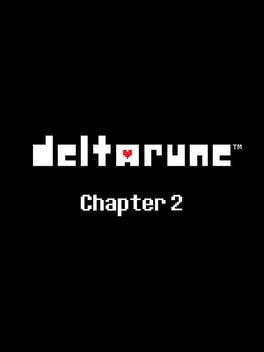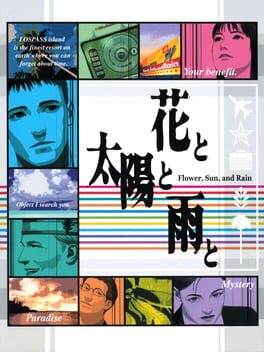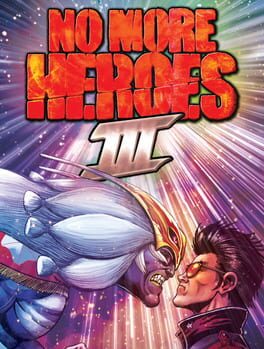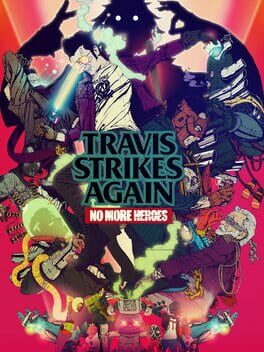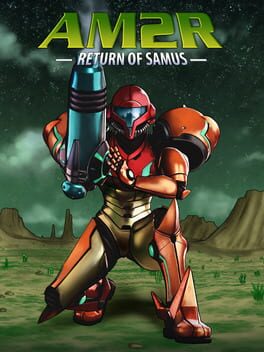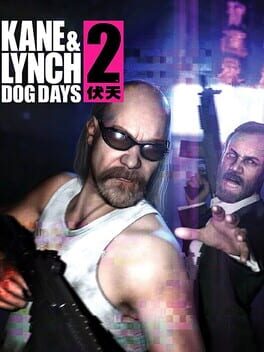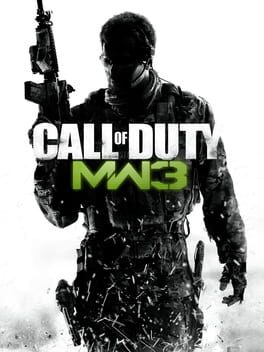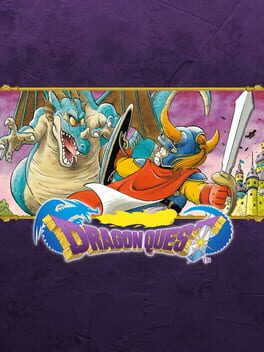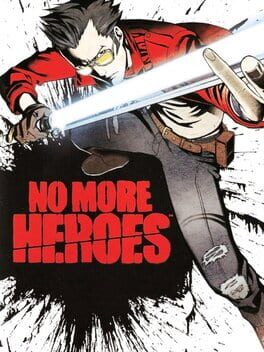middleman6251
Definitely worth it since Dark Souls is the best game ever, but pretty stupid how they wiped the Prepare to Die version from existence and force you to play the version with horrible lighting.
Admittedly, they fixed the servers but a lot of what made Dark Souls visually distinct and, well.. "Dark" is gone in this remaster.
Admittedly, they fixed the servers but a lot of what made Dark Souls visually distinct and, well.. "Dark" is gone in this remaster.
2021
Deltarune continues to show more promise and prowess over the foundations Undertale set. Even though it isn't complete and I don't feel comfortable rating it, Deltarune has so far surpassed the standards set by Undertale which is already a 10, so go figure what I'll rate this masterpiece when it's finished.
Kino, Sex, and Based
2021
I will definitely re-write this review to be much longer and detailed, but the game is so fresh on my mind that I don't feel I can do it an analytical justice for now. However, I can happily say that No More Heroes III lives up to every expectation I had and even exceeds some.
The combat is series best, with a perfect blend of style, challenge and gratification. The characters are all charming, with Suda51's style oozing through every part of the game. The only real problem is the visuals tanking in the open world, which does not happen often and is admittedly an endearing aspect that reminds me of the original Wii game. The music is banger after banger, from funky trap-inspired songs about sushi to a tribute to JRPG scores.
The story is quite the treat. It combines that snappy No More Heroes dialogue with a critique of videogames, anime and the superhero genre with references to Kill The Past sprinkled all throughout. The bosses are some of the best in the series and the dialogue is hilarious.
There's not much I can say at the moment other than No More Heroes III exceeded expectations and is the best game in the series. Expect a longer, more detailed review eventually. To summarize, though: This is the best game of the year so far and it had me glued to the screen with a smile the whole time.
Suda51 made it happen, baby.
The combat is series best, with a perfect blend of style, challenge and gratification. The characters are all charming, with Suda51's style oozing through every part of the game. The only real problem is the visuals tanking in the open world, which does not happen often and is admittedly an endearing aspect that reminds me of the original Wii game. The music is banger after banger, from funky trap-inspired songs about sushi to a tribute to JRPG scores.
The story is quite the treat. It combines that snappy No More Heroes dialogue with a critique of videogames, anime and the superhero genre with references to Kill The Past sprinkled all throughout. The bosses are some of the best in the series and the dialogue is hilarious.
There's not much I can say at the moment other than No More Heroes III exceeded expectations and is the best game in the series. Expect a longer, more detailed review eventually. To summarize, though: This is the best game of the year so far and it had me glued to the screen with a smile the whole time.
Suda51 made it happen, baby.
2019
When I say a game is “one of the best of all time”, you should know I mean it. When it comes to me, I rarely put a game at such a high level. In fact, I am bold enough to say this is one of the defining pieces of media of our generation. It’s hard to review Persona 5 Royal without repeating things I’ve already said about Persona 5, but for once in a lifetime I am not annoyed by having to repeat myself. The game is excellent. I should start with the visual style, which is hands down the most appealing in any game I’ve ever played.
All of the menus, even the most insignificant ones that some players could miss are filled with detail and have a unique flow to them. If you need weapons, you visit the Untouchable airsoft shop and the menus explode in green and yellow flare with a military flare. The menus are simply excellent and if these menus weren’t so good, I wouldn’t even be talking about them. Persona 5 went above and beyond what an average game would do with menus.
The music is some of the best I’ve heard in a video game, with vibrant jazz and rock when you battle as a Phantom Thief, and funky beats when you’re living your daily life. The new tracks added into Royal are excellent, with new battle themes that change depending on your approach. In a regular battle, the iconic Last Surprise will play, but if you ambush an enemy, you get the brand new Take Over. Every piece of music sets the mood and fits perfectly in every scene. I cannot praise Shoji Meguro and his team enough. The amazing visuals and foot tapping music come together to give this game one of the most unique styles ever.
The gameplay is split into two sections: Daily Life, in which you live like a normal student. You can go to the movie theater, work a part-time job, go hangout with your friends or even study. The other section is Thievery, in which you infiltrate the Metaverse as Phantom Thieves to fight turn-based battles and use Persona powers. Time plays a very important role, as you can’t repeat any days and you have to plan your use of time accordingly to not miss deadlines that can cause a game over. What Persona 5 does incredibly well is balance these two completely different phases, yet everything you do contributes to your progress. This liberty that Persona 5 gives you is reassuring that games should let the players explore and decide what they do in the world. The story of this game is perfect. It is a picturesque, excellently written perspective on the metaphorical chains holding down the main characters from freedom. Every character evolves naturally, with potent character development that is in some characters even stronger than others.
The new third semester introduces a final palace and story arc to be resolved, with a new ending and a definitive conclusion to the story of Persona 5. I won’t spoil anything in this section, but the new arc is the best in the entire game. The writing just improves across the board and the brand new palace is my new favorite, with absolutely stunning visuals and THE most emotional moments in the whole game. We’re also introduced to new characters way before this, though, with Kasumi Yoshizawa and Takuto Maruki. These two are an incredible addition to the story of the game. Kasumi is an extremely likable, fun character to play as with badass abilities and a good backstory. Takuto Maruki’s growth and personality are so realized and well written that I am confident in saying he’s one of my favorite characters in any game ever. Goro Akechi’s story is rebuilt, which makes him a more likable character with more development. The new Thieves’ Den, in which you can view and interact with many collectibles that document the history of Persona 5 in its entirety, is a very special new area for me. This being a place in which you can reminisce about the game, it made me very emotional as I rewatched cutscenes, interacted with character models and just remembered how much fun I had along the way. Royal pulls no punches and everything it changes, like balancing things and palace redesigns, feels improved upon. Every new thing makes it better and every retouch improves on the experience.
Persona 5 Royal so meticulously expands on what Persona 5 had done before that I don’t think I can ever go back to the original. Every old thing retouched is improved upon to masterclass standards and every new addition is equal to the mastery of the rebalancing. Anyone can have a different opinion of the game, but personally, this game had a potent impact on me and is a gaming experience that I will certainly never forget. This is the definitive way to experience Persona 5 and one of the most enjoyable journeys I've embarked on with a game. I enjoyed it so much, it led to what is perhaps my longest review I've written with near cringe-inducing levels of praise, but what can I say? Persona 5 as a whole changed my life and I feel like I grew up with the characters as the story developed. What an unforgettable experience.
All of the menus, even the most insignificant ones that some players could miss are filled with detail and have a unique flow to them. If you need weapons, you visit the Untouchable airsoft shop and the menus explode in green and yellow flare with a military flare. The menus are simply excellent and if these menus weren’t so good, I wouldn’t even be talking about them. Persona 5 went above and beyond what an average game would do with menus.
The music is some of the best I’ve heard in a video game, with vibrant jazz and rock when you battle as a Phantom Thief, and funky beats when you’re living your daily life. The new tracks added into Royal are excellent, with new battle themes that change depending on your approach. In a regular battle, the iconic Last Surprise will play, but if you ambush an enemy, you get the brand new Take Over. Every piece of music sets the mood and fits perfectly in every scene. I cannot praise Shoji Meguro and his team enough. The amazing visuals and foot tapping music come together to give this game one of the most unique styles ever.
The gameplay is split into two sections: Daily Life, in which you live like a normal student. You can go to the movie theater, work a part-time job, go hangout with your friends or even study. The other section is Thievery, in which you infiltrate the Metaverse as Phantom Thieves to fight turn-based battles and use Persona powers. Time plays a very important role, as you can’t repeat any days and you have to plan your use of time accordingly to not miss deadlines that can cause a game over. What Persona 5 does incredibly well is balance these two completely different phases, yet everything you do contributes to your progress. This liberty that Persona 5 gives you is reassuring that games should let the players explore and decide what they do in the world. The story of this game is perfect. It is a picturesque, excellently written perspective on the metaphorical chains holding down the main characters from freedom. Every character evolves naturally, with potent character development that is in some characters even stronger than others.
The new third semester introduces a final palace and story arc to be resolved, with a new ending and a definitive conclusion to the story of Persona 5. I won’t spoil anything in this section, but the new arc is the best in the entire game. The writing just improves across the board and the brand new palace is my new favorite, with absolutely stunning visuals and THE most emotional moments in the whole game. We’re also introduced to new characters way before this, though, with Kasumi Yoshizawa and Takuto Maruki. These two are an incredible addition to the story of the game. Kasumi is an extremely likable, fun character to play as with badass abilities and a good backstory. Takuto Maruki’s growth and personality are so realized and well written that I am confident in saying he’s one of my favorite characters in any game ever. Goro Akechi’s story is rebuilt, which makes him a more likable character with more development. The new Thieves’ Den, in which you can view and interact with many collectibles that document the history of Persona 5 in its entirety, is a very special new area for me. This being a place in which you can reminisce about the game, it made me very emotional as I rewatched cutscenes, interacted with character models and just remembered how much fun I had along the way. Royal pulls no punches and everything it changes, like balancing things and palace redesigns, feels improved upon. Every new thing makes it better and every retouch improves on the experience.
Persona 5 Royal so meticulously expands on what Persona 5 had done before that I don’t think I can ever go back to the original. Every old thing retouched is improved upon to masterclass standards and every new addition is equal to the mastery of the rebalancing. Anyone can have a different opinion of the game, but personally, this game had a potent impact on me and is a gaming experience that I will certainly never forget. This is the definitive way to experience Persona 5 and one of the most enjoyable journeys I've embarked on with a game. I enjoyed it so much, it led to what is perhaps my longest review I've written with near cringe-inducing levels of praise, but what can I say? Persona 5 as a whole changed my life and I feel like I grew up with the characters as the story developed. What an unforgettable experience.
1994
Super Metroid is built on a foundation of dread. Clever foreshadowing of future events and callbacks to the original game set the stage for Samus Aran's most dangerous adventure yet. From the very beginning, you can see the layers in the world you will be peeling back out of that sense of adventure and throughout its entire runtime, Super Metroid not only never disappoints, but it constantly proves its ability to create an engaging adventure as a genre-defining masterpiece.
The world is expertly designed, with foreshadowing and temporarily inaccessible pathways that lead to new abilities. These abilities grant even more possibilities to the player for exploration and combat. The dread created with the seemingly abandoned environemt is elevated as you slowly but surely realize you are not alone in Planet Zebes. This atmosphere is created with the amazing art-direction, music and sound that fits the setting perfectly.
The exploration is top notch, every single location bleeds into the other with movement so fluid that every single jump and move feels natural and an overall tool that can enhance and reward a skilled player's experience. It treats you and challenges you as an intelligent player with so little flaws that it genuinely feels like this game could have come out this year.
Overall, Super Metroid is a turning point not only for the series, but for adventure games overall. This genre defining masterpiece has aged like a fine wine over the past 27 years and has single-handedly proven to me how far the potential for this series can go.
The world is expertly designed, with foreshadowing and temporarily inaccessible pathways that lead to new abilities. These abilities grant even more possibilities to the player for exploration and combat. The dread created with the seemingly abandoned environemt is elevated as you slowly but surely realize you are not alone in Planet Zebes. This atmosphere is created with the amazing art-direction, music and sound that fits the setting perfectly.
The exploration is top notch, every single location bleeds into the other with movement so fluid that every single jump and move feels natural and an overall tool that can enhance and reward a skilled player's experience. It treats you and challenges you as an intelligent player with so little flaws that it genuinely feels like this game could have come out this year.
Overall, Super Metroid is a turning point not only for the series, but for adventure games overall. This genre defining masterpiece has aged like a fine wine over the past 27 years and has single-handedly proven to me how far the potential for this series can go.
Travis' journey started with No More Heroes. In that game, he was an antithesis of the generic videogame protagonist and we saw him evolve as he came to understand his own mortality and the true meaning of paradise. This journey continued in No More Heroes 2, albeit in a much less unique way, with rage fueling his every action. In the real world, director Suda51 faces trials and tribulations as his success brought him into the elaborate yet cut-throat videogame industry.
9 years after No More Heroes' release, Suda returns to the writer/director position alongside Travis' return as the main character. They both return wiser, and as Travis used to be an antithesis to game protagonists, he is now a surrogate Suda51, detailing his experiences in the game industry while progressing the story of the actual game into what feels like a true sequel to No More Heroes 1. Travis' past starts to catch up to him in the form of Badman, who he needs to form an unlikely comradery with to resucitate Badgirl, one of Travis' opponents in the first game. They both venture into multiple game worlds through the Death Drive Mk2 and discover the life of the console's creator: Doctor Juvenile. The backdrop of this story is Suda's entire career as a game developer and the game itself is a reflection on everything that has brought him to this point.
Every game world represents a point in Suda's life, with references, callbacks and appearances of elements from his previous games sprinkled all throughout with the unique dialogue we've come to miss from Suda's work. Without spoiling, these games represent past success and how it can weigh you down, experiences with massive developers and how creativity can be lost in translation or maliciously robbed from an artist. It all comes down to Suda's career-long theme of killing the past. How can he make a comeback? How can he start anew with his creative endeavors? Well, by reflecting on the past that has weighed him down and kill it.
On the gameplay side of things, Travis Strikes Again retains some elements of the gameplay in the original No More Heroes but is completely different, with a top-down perspective and enemy placement reminiscent of Hotline Miami. It feels indie because it is indie, in that Suda scaled back completely for the development of Travis Strikes Again and he pays homage to the numerous, groundbreaking indie titles of the 2010s. Co-Op is the way to go in this game, as Badman and Travis slowly come to understand and like each other, so will the two players. Like every co-op, you must collaborate and eventually you both will achieve a flow of combat that reflects the character development in-game, which I think is genius. Going solo is also serviceable, albeit it could get dull depending on your tastes. Every level is tight, unique and represents an individual theme/element of Suda's past which you need to slash your way through in order to move on. Bitchin' music only elevates the experience more.
In the end, I can't really say much about Travis Strikes Again, yet I want to so much more. I'd rather leave most of these themes and ideas up to the people playing to discover and analyze. If I had to summarize my thoughts, I'd say Travis Strikes Again is an extremely tight experience that is never dull and sets out to be a love letter to fans of the series whilst representing the creator's struggles to put his long-lasting theme into effect in the real world. After 20 years of making games and after so many trials and tribulations, Suda must KILL THE PAST by himself in order to truly reinvent his art and start over...
No More Heroes III released yesterday... That itself proves Travis Strikes Again to be a success for Suda, who finally was able to rediscover his love for making videogames. Thank you, Suda and Grasshopper.
9 years after No More Heroes' release, Suda returns to the writer/director position alongside Travis' return as the main character. They both return wiser, and as Travis used to be an antithesis to game protagonists, he is now a surrogate Suda51, detailing his experiences in the game industry while progressing the story of the actual game into what feels like a true sequel to No More Heroes 1. Travis' past starts to catch up to him in the form of Badman, who he needs to form an unlikely comradery with to resucitate Badgirl, one of Travis' opponents in the first game. They both venture into multiple game worlds through the Death Drive Mk2 and discover the life of the console's creator: Doctor Juvenile. The backdrop of this story is Suda's entire career as a game developer and the game itself is a reflection on everything that has brought him to this point.
Every game world represents a point in Suda's life, with references, callbacks and appearances of elements from his previous games sprinkled all throughout with the unique dialogue we've come to miss from Suda's work. Without spoiling, these games represent past success and how it can weigh you down, experiences with massive developers and how creativity can be lost in translation or maliciously robbed from an artist. It all comes down to Suda's career-long theme of killing the past. How can he make a comeback? How can he start anew with his creative endeavors? Well, by reflecting on the past that has weighed him down and kill it.
On the gameplay side of things, Travis Strikes Again retains some elements of the gameplay in the original No More Heroes but is completely different, with a top-down perspective and enemy placement reminiscent of Hotline Miami. It feels indie because it is indie, in that Suda scaled back completely for the development of Travis Strikes Again and he pays homage to the numerous, groundbreaking indie titles of the 2010s. Co-Op is the way to go in this game, as Badman and Travis slowly come to understand and like each other, so will the two players. Like every co-op, you must collaborate and eventually you both will achieve a flow of combat that reflects the character development in-game, which I think is genius. Going solo is also serviceable, albeit it could get dull depending on your tastes. Every level is tight, unique and represents an individual theme/element of Suda's past which you need to slash your way through in order to move on. Bitchin' music only elevates the experience more.
In the end, I can't really say much about Travis Strikes Again, yet I want to so much more. I'd rather leave most of these themes and ideas up to the people playing to discover and analyze. If I had to summarize my thoughts, I'd say Travis Strikes Again is an extremely tight experience that is never dull and sets out to be a love letter to fans of the series whilst representing the creator's struggles to put his long-lasting theme into effect in the real world. After 20 years of making games and after so many trials and tribulations, Suda must KILL THE PAST by himself in order to truly reinvent his art and start over...
No More Heroes III released yesterday... That itself proves Travis Strikes Again to be a success for Suda, who finally was able to rediscover his love for making videogames. Thank you, Suda and Grasshopper.
The biggest theme I could recognize in Metroid 2 is destruction. We take control of Samus on a mission to exterminate every single Metroid on planet SR388. The deeper you venture into the cavernous depths of Metroid 2, the lonelier it becomes. This feeling of isolation, pain and fear is only true to this fan-remake of the original Metroid 2, the latter of which is only slightly less grating than Metroid on the NES. It's impressive how such a mediocre game like Metroid 2 can be marginally improved by the passion and effort of fans.
As shown in the first few sentences of this review, I struggle even calling Another Metroid 2 Remake by its name and instead refer to it as Metroid 2. The reason for which is simple: This is the definitive and most refined version of Metroid 2 that has been released. It feels extremely familiar yet fresh to me, as someone who played Metroid: Zero Mission prior to this one. The controls, UI and movement are not unlike Zero Mission's, albeit with improvements to the menu, map and overall control of Samus.
The world is menacing and dark, getting lonelier and scarier the deeper you descend into SR388. All of this thanks to the amazing work of Milton Guasti, who somehow took a mediocre game and transformed it into something truly enjoyable. Not much to say other than hats off to Milton Guasti once again, who by sheer passion and dedication, crafted the definitive way to experience Metroid 2 that will likely never be topped and stands amongst the best installments of the franchise, without even being official.
As shown in the first few sentences of this review, I struggle even calling Another Metroid 2 Remake by its name and instead refer to it as Metroid 2. The reason for which is simple: This is the definitive and most refined version of Metroid 2 that has been released. It feels extremely familiar yet fresh to me, as someone who played Metroid: Zero Mission prior to this one. The controls, UI and movement are not unlike Zero Mission's, albeit with improvements to the menu, map and overall control of Samus.
The world is menacing and dark, getting lonelier and scarier the deeper you descend into SR388. All of this thanks to the amazing work of Milton Guasti, who somehow took a mediocre game and transformed it into something truly enjoyable. Not much to say other than hats off to Milton Guasti once again, who by sheer passion and dedication, crafted the definitive way to experience Metroid 2 that will likely never be topped and stands amongst the best installments of the franchise, without even being official.
2021
Barebones, weak and dull. Back 4 Blood is only a spiritual successor to Left 4 Dead in name and the fact it has zombies, but everything else lacks the style, effort and fun that a 10+ year old game has. Nice job.
Kino & Lynch 2: Dog Days
2017
The atmosphere captures you almost immediately. The darkness, the gloominess and the almost gothic-like architecture of Hallownest invites you to explore it and get lost in the world. When it comes to how we define a metroidvania, or any videogame for that matter: Hollow Knight is a monumental achievement.
I'll try to tackle every major aspect one at a time. Exploration is clearly the most important focus of Hollow Knight. Given what I said in the first section of the review, it should not surprise you that Hallownest instills a desire for exploration and adventure to the player. It encourages you to go off the beaten path, or actually, it has no beaten path whatsoever. Hallownest is filled to the brim with secrets, areas and atmospheres to take in and experience to the fullest. From the eeriest and deepest parts of Deepnest to the gothic City of Tears, the game is not only atmospheric, but well designed with an encouragement to explore every last inch of it and see everything that it has to show. The map mechanic works with this to never show you exactly what is where, and entice you to find out by yourself, or perhaps get lost.
When you get lost, all you have to yourself is your nail. You will face off against cute insects and terrifying monstrosities that will test your skills as a player but always offer fairness above anything. The combat is simple, but allows for endless possibilities and combinations of abilities through the Charm mechanic. Mixing and matching different playstyles for variety and an added level of challenge. Like any Metroidvania, you gain power-ups and abilities that unlock more paths to explore and more tactics during combat, but your go-to will always be your trusty nail sword, which you can use, refine and upgrade as you wish. The simplicity of the combat combined with the customization aspect grant Hollow Knight a challenging, but fair and fun combat system.
Moving on to the art: This game has an art-style and atmosphere which are unlike anything I've ever played. The hand-drawn animations are simple, but charming with character designs and voices that I will certainly never forget. The relief of finding Cornifer, or the intrigue of a character like Hornet. All of these characters are in equal parts memorable and well-written. The dialogue and story are reminiscent of Dark Souls, in that there are a lot of plot threads that the player can either interpret as they want to, or completely unfounded for someone who doesn't set out to find them. All of the art and story are pushed to even greater heights by Christopher Larkin's excellent score. The boss themes and area music are excellent, memorable and instill every emotion they want to instill. From fear, to challenge, to epicness, to serenity. Hollow Knight's soundtrack is one of the things I loved the most.
All of this comes in a complete package that, even if you are thorough, you will still have much to do in when you finish it. The amount of content is almost unbelievable when compared to the price-tag. The amount of sheer quality content is a testament to the passion of the developers. The Grimm Troupe is my favorite out of the DLCs with one of my favorite bosses and music added to the already complete package that is the base game of Hollow Knight. I fully expect someone to instill more than 60 hours into this adventure.
Hollow Knight comes to a gorgeous climax. Once your each the end, which I won't spoil, you start to see everything come together. The last 30 minutes of your playthrough will most likely combine every aspect I have talked about. The adventure to the final area, accompanied with beautiful and exciting music, art, and writing with a final segment that puts every one of your skills acquired to the test. And once it's all over, all you have is an even more vast, exciting and beautiful possibilities for adventure.
Even after the end, Hollow Knight instills an adventurous spirit into the player and encourages you to see it all and once you're done, look back at everything and marvel at how excellent, detailed and beautiful the game of Hollow Knight is.
I'll try to tackle every major aspect one at a time. Exploration is clearly the most important focus of Hollow Knight. Given what I said in the first section of the review, it should not surprise you that Hallownest instills a desire for exploration and adventure to the player. It encourages you to go off the beaten path, or actually, it has no beaten path whatsoever. Hallownest is filled to the brim with secrets, areas and atmospheres to take in and experience to the fullest. From the eeriest and deepest parts of Deepnest to the gothic City of Tears, the game is not only atmospheric, but well designed with an encouragement to explore every last inch of it and see everything that it has to show. The map mechanic works with this to never show you exactly what is where, and entice you to find out by yourself, or perhaps get lost.
When you get lost, all you have to yourself is your nail. You will face off against cute insects and terrifying monstrosities that will test your skills as a player but always offer fairness above anything. The combat is simple, but allows for endless possibilities and combinations of abilities through the Charm mechanic. Mixing and matching different playstyles for variety and an added level of challenge. Like any Metroidvania, you gain power-ups and abilities that unlock more paths to explore and more tactics during combat, but your go-to will always be your trusty nail sword, which you can use, refine and upgrade as you wish. The simplicity of the combat combined with the customization aspect grant Hollow Knight a challenging, but fair and fun combat system.
Moving on to the art: This game has an art-style and atmosphere which are unlike anything I've ever played. The hand-drawn animations are simple, but charming with character designs and voices that I will certainly never forget. The relief of finding Cornifer, or the intrigue of a character like Hornet. All of these characters are in equal parts memorable and well-written. The dialogue and story are reminiscent of Dark Souls, in that there are a lot of plot threads that the player can either interpret as they want to, or completely unfounded for someone who doesn't set out to find them. All of the art and story are pushed to even greater heights by Christopher Larkin's excellent score. The boss themes and area music are excellent, memorable and instill every emotion they want to instill. From fear, to challenge, to epicness, to serenity. Hollow Knight's soundtrack is one of the things I loved the most.
All of this comes in a complete package that, even if you are thorough, you will still have much to do in when you finish it. The amount of content is almost unbelievable when compared to the price-tag. The amount of sheer quality content is a testament to the passion of the developers. The Grimm Troupe is my favorite out of the DLCs with one of my favorite bosses and music added to the already complete package that is the base game of Hollow Knight. I fully expect someone to instill more than 60 hours into this adventure.
Hollow Knight comes to a gorgeous climax. Once your each the end, which I won't spoil, you start to see everything come together. The last 30 minutes of your playthrough will most likely combine every aspect I have talked about. The adventure to the final area, accompanied with beautiful and exciting music, art, and writing with a final segment that puts every one of your skills acquired to the test. And once it's all over, all you have is an even more vast, exciting and beautiful possibilities for adventure.
Even after the end, Hollow Knight instills an adventurous spirit into the player and encourages you to see it all and once you're done, look back at everything and marvel at how excellent, detailed and beautiful the game of Hollow Knight is.
A very satisfying conclusion to the Modern Warfare trilogy. Stylish and entertaining set-pieces work together with the dramatic narrative to tie up loose ends and lead to one of the most satisfying ending scenes.
However, besides the campaign, Modern Warfare 3 does nothing to improve on the formula or mechanics established in Modern Warfare 2. The multiplayer is weaker due to the lack of innovation and changes to the gameplay. The utter mediocrity of Modern Warfare 3 is elevated by its campaign by a large margin but it does almost nothing to innovate or try to up its predecessors.
However, besides the campaign, Modern Warfare 3 does nothing to improve on the formula or mechanics established in Modern Warfare 2. The multiplayer is weaker due to the lack of innovation and changes to the gameplay. The utter mediocrity of Modern Warfare 3 is elevated by its campaign by a large margin but it does almost nothing to innovate or try to up its predecessors.
The first No More Heroes successfuly created an antithesis of action games with a profound tale of an assassin falling deeper into a world of violence and coming to terms with his own identity. No More Heroes 2: Desperate Struggle is not only mediocre, but it also goes back on much of what made the first so unique and interesting. It barely warrants as much detail as my review for the first.
The gameplay is significantly worse, with less variety despite multiple weapons being equippable. There's simply no incentive to use anything besides the beam katana. The lack of fees for ranking missions makes the side-jobs absolutely unnecessary and thrown to the side. The game is insultingly easy, even in the highest difficulty with a few spikes that are barely a bother to deal with. Slashing up your enemies is as fun as it has ever been in No More Heroes, but the stages have such a lack of variety and so much repetition you can beat the game in one sitting, which is what I did.
The story is weak, with forgettable villains and bosses and a main antagonist that is quite literally an afterthought. The collection of tracks for the OST save this game from being bad, as it has the best music in the series so far. The themes and profoundness are gone, in exchange for a generic action game, which is ironic considering No More Heroes 1 was critcizing and parodying those games.
The gameplay is significantly worse, with less variety despite multiple weapons being equippable. There's simply no incentive to use anything besides the beam katana. The lack of fees for ranking missions makes the side-jobs absolutely unnecessary and thrown to the side. The game is insultingly easy, even in the highest difficulty with a few spikes that are barely a bother to deal with. Slashing up your enemies is as fun as it has ever been in No More Heroes, but the stages have such a lack of variety and so much repetition you can beat the game in one sitting, which is what I did.
The story is weak, with forgettable villains and bosses and a main antagonist that is quite literally an afterthought. The collection of tracks for the OST save this game from being bad, as it has the best music in the series so far. The themes and profoundness are gone, in exchange for a generic action game, which is ironic considering No More Heroes 1 was critcizing and parodying those games.
2004
The one that started it all. Its simplicity adds to the overall charm of the experience. It's so basic, yet holds up so perfectly more than 30 years later. Compared to my favorite RPGs, it's nothing to be floored by, but the traditional, classic feel is unfounded in most games nowadays, which is why Dragon Quest is a must-play, despite its age and simplicity. Also the enemy designs are excellent and the music got me good.
2007
Suda51 found success in killer7 and could now usher in a new project that would see a worldwide release. His idea of a katana-wielding loser out for blood, revenge and sex still holds up 14 years later. Not just that, it has perhaps gotten better with age as an antithesis of videogame protagonists.
We follow Travis Touchdown, a broke otaku who spends his days watching anime and "tugging the tiger" who finds himself in a battle to the death on a city-wide scale with an ensemble of assassins. To get to the #1 ranking of the Top Assassins, he needs to literally work his way to the top with mundane side-jobs to pay the entry fee for the awesome battles.
The mundane and somewhat bland aspects of No More Heroes are purposeful to the overall theme of the game which aims to show how lonely and insignificant Travis' life is. He trascends videogame protagonists and the messiah complex most games follow and opts to make it apparent how much of a pathetic loser Travis is. It's almost like Suda, with killer7 and No More Heroes, predicted the rise in generic game protagonists and thus created characters that are not only products of their world but unique in their own right. Travis' loneliness is solidified with the bland, yet charming open world and tedious part-time jobs you must perform to get into the real meat of the game: The ranked battles.
The 10 boss battles are where the real mastery of Suda's creativity went to. All 10 bosses represent a theme and/or bitingly criticize the ideas of violence and how people view it. You'll see charming characters exchange philosophies with Travis, all revolving around the looming fear of death, how violence is portrayed in media, viewed by the public, the meaning of paradise, and so much more we've come to expect from Suda51 games. Philosophies that, despite Travis' bluntness, affect him deeply as a characters.
The adrenaline pumping, ultraviolent slashing of No More Heroes and the profound themes lying within each character works towards the development of Travis as a character. As he goes along, he realizes that the endless murder and violence isn't the answer or the key to a better life, but that paradise is merely "a place to die". By the end, Travis realizes that to become anew and grow as a person he must KILL THE PAST that has worn him down to his rock bottom. This character works with the ultraviolent and addicting gameplay, the witty writing and the once again, fantastic music by Masafumi Tadaka to deliver a game that is like no other. No More Heroes holds up as one of the best games of the Wii era and a thematic ocean to dive into, whilst enjoying the nuts to buts action. I can't praise this game enough.
We follow Travis Touchdown, a broke otaku who spends his days watching anime and "tugging the tiger" who finds himself in a battle to the death on a city-wide scale with an ensemble of assassins. To get to the #1 ranking of the Top Assassins, he needs to literally work his way to the top with mundane side-jobs to pay the entry fee for the awesome battles.
The mundane and somewhat bland aspects of No More Heroes are purposeful to the overall theme of the game which aims to show how lonely and insignificant Travis' life is. He trascends videogame protagonists and the messiah complex most games follow and opts to make it apparent how much of a pathetic loser Travis is. It's almost like Suda, with killer7 and No More Heroes, predicted the rise in generic game protagonists and thus created characters that are not only products of their world but unique in their own right. Travis' loneliness is solidified with the bland, yet charming open world and tedious part-time jobs you must perform to get into the real meat of the game: The ranked battles.
The 10 boss battles are where the real mastery of Suda's creativity went to. All 10 bosses represent a theme and/or bitingly criticize the ideas of violence and how people view it. You'll see charming characters exchange philosophies with Travis, all revolving around the looming fear of death, how violence is portrayed in media, viewed by the public, the meaning of paradise, and so much more we've come to expect from Suda51 games. Philosophies that, despite Travis' bluntness, affect him deeply as a characters.
The adrenaline pumping, ultraviolent slashing of No More Heroes and the profound themes lying within each character works towards the development of Travis as a character. As he goes along, he realizes that the endless murder and violence isn't the answer or the key to a better life, but that paradise is merely "a place to die". By the end, Travis realizes that to become anew and grow as a person he must KILL THE PAST that has worn him down to his rock bottom. This character works with the ultraviolent and addicting gameplay, the witty writing and the once again, fantastic music by Masafumi Tadaka to deliver a game that is like no other. No More Heroes holds up as one of the best games of the Wii era and a thematic ocean to dive into, whilst enjoying the nuts to buts action. I can't praise this game enough.

